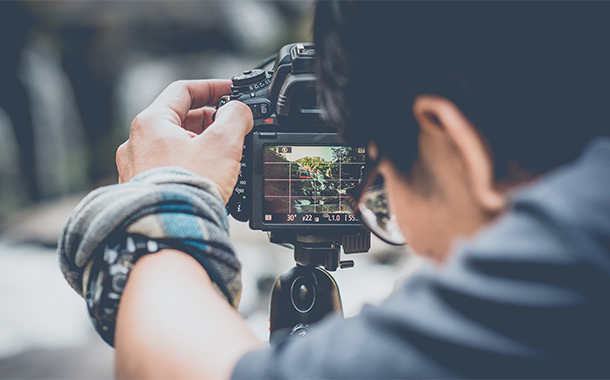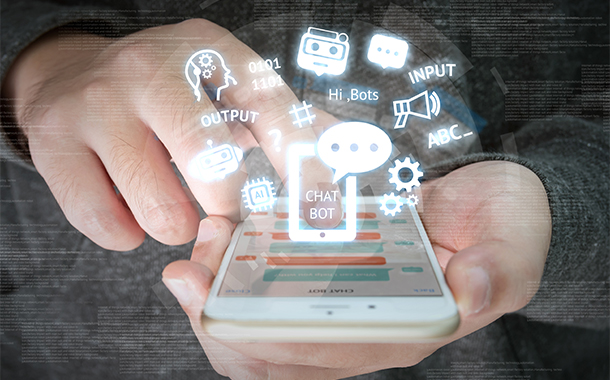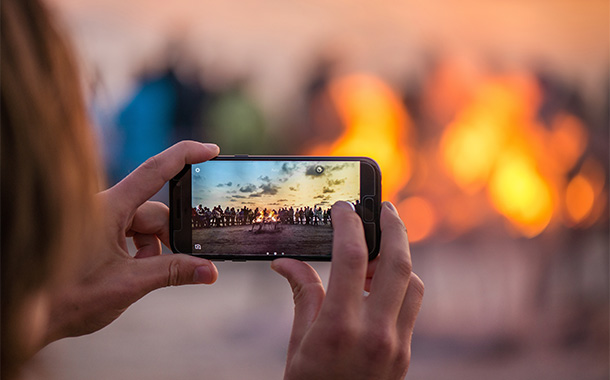Facebook, Instagram, Twitter, and other popular social media networks continuously update their platforms, which is why it’s critical for marketers to keep up-to-date with the latest developments in the social media space.
So to help you prepare for the changes to come in 2018, we’ve put together a list of the top social media trends you need to know about.
Let’s dive in…
1) Video on demand, in demand

Nothing on social media is as eye-catching as good video content. Whether you’re marketing on YouTube, Facebook, Instagram, Twitter, or Snapchat, it looks like social video engagement stats are going to be through the roof in 2018.
If you’re not convinced, these social media video statistics should prove why video is worth your attention:
- YouTube viewers watch a billion hours of video each day
- Facebook users consume over 8 billion videos every day
- 82% of Twitter’s audience views video content on the platform
There’s a huge variety of formats this video content can take, from 360-degree videos to live streams. This gives marketing teams a serious amount of flexibility when it comes to planning video campaigns.
One thing to keep in mind, though, is that mobile comes first. After all, 90% of Twitter video views and 60% of YouTube views are now from users on mobile devices.
The marketing community has seen the writing on the wall—65% of marketers are preparing to increase their budgets for mobile ads to focus more on video within the next few months.
2) Social media influencers gaining more…influence

At this point, the advantages of social influencer marketing have been well-established. That’s why marketers should expect heated competition if they want to work with top brand influencers this year.
To avoid the pressure of competing with rival brands, marketers will be looking to develop more long-term relationships with key social media influencers in 2018.
But why bother looking to partner up for the long haul? Just look at Louis Vuitton’s 2016 partnership with Selena Gomez. It ended abruptly when rival fashion brand Coach managed to sign a new deal with the celebrity influencer, leaving Louis Vuitton out in the cold.
Another key advancement in influencer marketing strategy this year will be authenticity. Consumers can easily detect influencer-brand collaborations that seem forced and call them out, which is why savvy marketers will focus on building organic relationships with influencers that mesh with their brand in 2018.
3) The EU’s crackdown on data collection

In 2018, the European Union is getting serious about companies collecting consumer data. On May 25, 2018, the General Data Protection Regulation (GDPR) is going into effect. Will your company be prepared?
Basically, the GDPR gives EU citizens more control over their personal data. Every time a company wants to collect information from a consumer, they’ll now need explicit consent from the individual.
That data could be anything from their location to their name to their email address. On top of that, the company will need to tell the person what data they plan to collect and how they’ll use it.
I know what you’re thinking—if my business isn’t in the EU, no problem, right? Well, the GDPR is applicable to any company that collects data on any EU citizen. And U.S.-based companies are actually more prepared for the GDPR than European ones; less than 75% of European companies will be GDPR compliant by May, compared to 84% of American companies.
What happens if your business doesn’t comply? It’s not pretty: you’ll be faced with an EU fine of up to 4% of global annual turnover or 23 million USD—whichever is greater.
4) Chatbots taking over the world

2018 will be the year that brands need to start thinking about social media bots.
Chatbots have been around for years, but they’ve seen bigtime AI improvements recently. More and more brands are working on using chatbots for customer support and perfecting their chatbot marketing strategy.
Right now, chatbots are mostly used for customer service—61% of consumer-chatbot interactions are centered around customer service-related questions. The future of bots is looking bright, too, with an estimated 85% of customer interactions managed by chatbots by 2020.
But who exactly is using chatbots? It looks like Millennials are the main culprits. 58% of Millenials have used a chatbot before and 71% say they would try interacting with a chatbot from a major brand, according to a survey by Retale.
With this coveted demographic on board, it’s only a matter of time before AI assistants become the new normal.
5) The new art of storytelling

With their growing popularity, social media “stories” will be impossible for marketers to ignore in the coming year. The “stories” format pioneered by Snapchat has now become a staple of the social media world.
First Instagram created Instagram Stories, and now YouTube has released a stories format of their own called “Reels”. Each offers unique features and presentation, but they all follow the same concept.
Stories capture the best moments from a day and most vanish after a set period of time. Their temporary nature creates a sense of FOMO for users who don’t check them out before they disappear. They’re also just a fun, bite-sized way to present video content.
2018 is sure to be a big year for stories, with even WhatsApp and Facebook joining the fray. It’s time to think about stories as a key part of your social marketing strategy.
New Year, New Strategy
All these trends will shape the landscape of social and digital marketing in 2018. To keep your brand ahead of the curve, you’ll need update your content and strategy to reflect changing consumer desires.
Whether you’re introducing chatbots for customer service or starting a Facebook livestream to promote your new product, you’ll want to keep a close eye on these developments as the year progresses.
Source: www.thedrum.com
Leave a Reply